Mumbai
Colonial and modern
The above picture was taken in the car coming into the city from the airport. It shows what one first experiences as Mumbai, a mixture of 21st-century skyscrapers and 19th-century, ah, "low-cost housing".
We decided to spend three days in Mumbai because (a) we had never
been there and it is after all one of India's major cities; (b) we
wanted
to see some of what Salman Rushdie talks about in his books; and (c) it
sounded interesting and was a natural stop-off on the way from Varanasi
to Karnataka -- well, sort of. The most remarkable things we saw were
all the buildings left over from the Raj, the British rule over India.
But there is also a relative backwater, a little piece of village life
left at the foot of Malabar Hill, with luxurious apartment buildings in
plain site. Our last day, we took a boat out to Elephanta Island to
admire the cave temple and sculptures from hundreds of years ago -- a
foretaste of what we would see in the south in Badami (Karnataka).
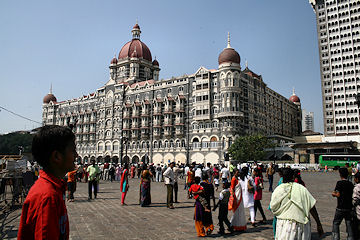 |
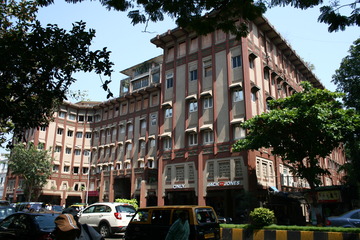 |
| Taj Palace Hotel |
Dhunraj Mahal, an art-deco
building |
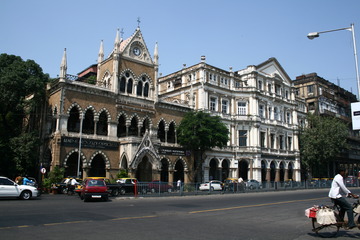 |
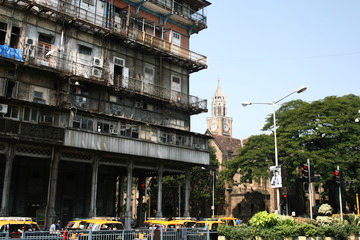 |
| David Sassoon Library |
This building once knew better days as an elegant hotel |
 |
 |
| Hotel Majestic behind Regal Circle |
Elphinstone College |
 |
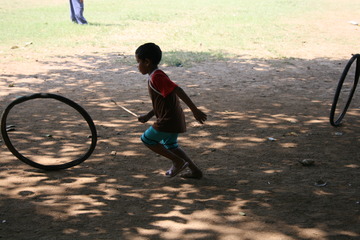 |
| Cricket on
the Oval Maidan (which is rectangular) |
Sport for
smaller children |
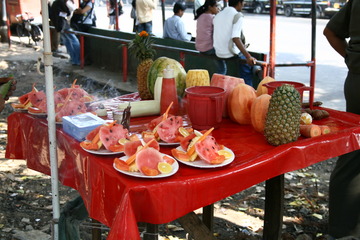 |
 |
| Fresh fruit
for sale -- looks delicious |
Art Deco building in the Colaba area of Mumbai |
The above pictures were taken during a long walk John made the first day, starting from our hotel in the district known as Colaba and going up to the Oval Maidan, a rectangular playing field. That evening, we took a car up to the top of Malabar Hill, to look at the Hanging Gardens and Kamala Nehru Park. The next day, we had a guided tour by car of more widespread sites.
 |
 |
| Kamala Nehru Park on Malabar Hill |
Marine Drive and Chowpatty Beach |
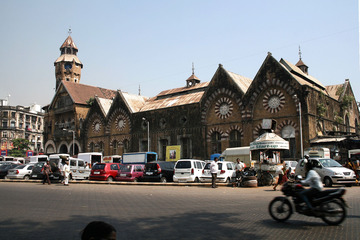 |
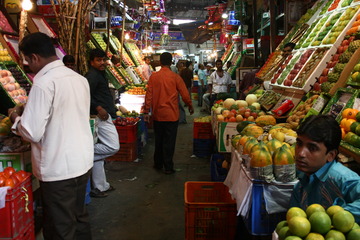 |
| Crawford Market | Fruit vendors inside Crawford
Market |
 |
 |
| Close-up of a fruit vendor |
Another view of the enormous Crawford Market |
 |
 |
| 'Bouquinistes' close to the Crawford Market, which may be the world's largest outdoor book market |
Mumbai Police Headquarters across from Crawford Market |
We visited the Crawford Market, the exterior friezes of which were
designed by the father of Rudyard Kipling. It is quite large and very
lively and colorful. After that, we drove up Malabar Hill and then to
the area of the Banganga Tank, at its foot. This area is amazing,
almost like a small village in the heart of the city. We saw what
one might call low-rent housing there too, But John went into that area
for a look and it was relatively clean. Please understand, we are not
making a case here for slums.
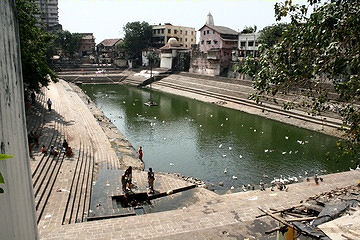 |
 |
| Banganga Tank |
Flamboyant Indians kids in the tank shallows |
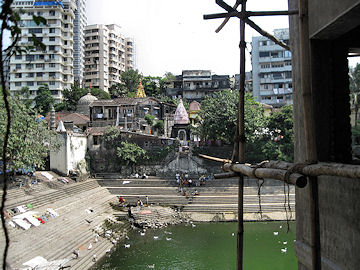 |
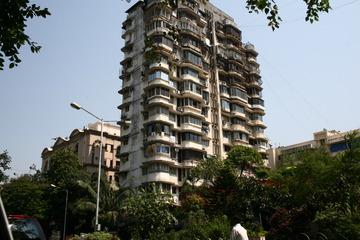 |
| Luxury high-rises just north of
the tank |
Apartment building on the way back from Malabar Hill |
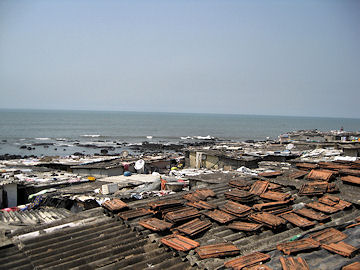 |
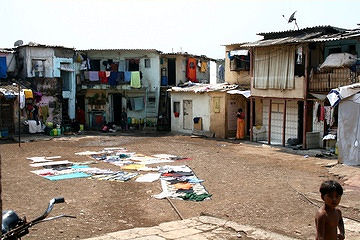 |
| The slums where the dhobis (laundrymen) used to live - picture taken from Malabar Hill |
Small square in the people's
quarter just off Malabar Hill, next to Banganga Tank |
We then visited the Mahalaxmi Dhobi Ghat, this some-136-year-old
dhobi ghat which is Mumbai´s oldest and biggest human powered washing
machine. Here thousands of kilos of dirty clothes are washed every day
by thousands of men. As we have often noticed, in India, manual labor is
still cheaper than machines.
After that, we dropped by the Chhatrapati Shivaji Terminus
(which the English called Victoria Terminus), Mumbai's main train station. It is considered the most impressive example of Victorian Gothic architecture in all of India - designed in 1887 -1888. On 2 July 2004, the station was nominated as a World Heritage Site by the World Heritage Committee of UNESCO.
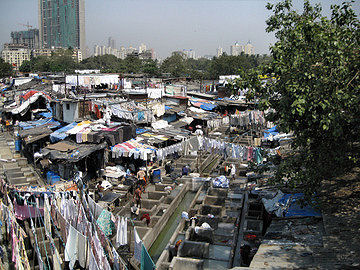 |
 |
| Mahalaxmi dhobi ghat | |
 |
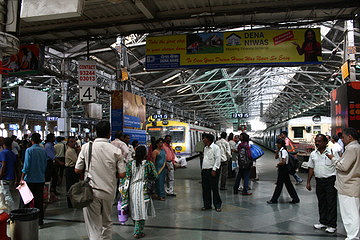 |
| Chhatrapati Shivaji Terminus - Victoria Terminus, popularly known by its acronym VT | |
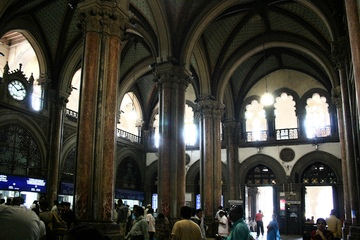 |
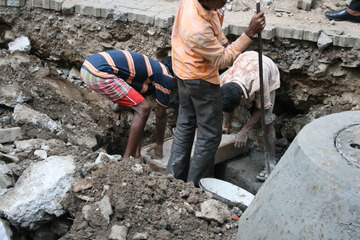 |
| Inside Victoria Terminus, "a brilliant specimen of the Victorian Gothic style of architecture" |
Indian street workers in front of
our hotel, in the Colaba district of Mumbai |
And India still does not know (or care?) about worker's rights or protection. Men were working in a hole in the street in front of our hotel, pulling around heavy chunks of concrete. Did they have steel-toed shoes? Nope, sandals.
Next: A day at Elephanta Island, an impressive cave-temple with gorgeous sculptures.
Back to India 2009.
